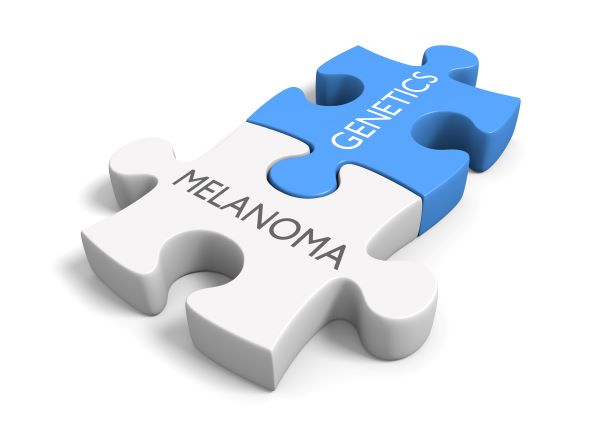Skin cancer is one of the most serious conditions we treat at U.S. Dermatology Partners. As such, we are committed to helping our patients better understand the risk factors and warning signs of this serious skin health concern. In this blog, Dr. Michael Yablonsky, of U.S. Dermatology Partners in Annapolis and Silver Spring, Maryland, and Fairfax, Virginia, has taken the time to answer some of the questions we hear most often about skin cancer, including addressing whether or not skin cancer is genetic or hereditary.
Q: Is Skin Cancer Genetic?
So, Dr. Yablonsky, one of the main questions people ask about skin cancer is whether or not it’s genetic or inherited from family members. Is skin cancer genetic?
A: Your Genes Are One Risk Factor Connected with Skin Cancer
That’s a great question, and I wish there was a simple yes or no answer. Unfortunately, the answer is a little complicated. Our genetics determine almost everything about us. From whether we have curly hair or straight to our risk of developing certain health conditions, we inherit a lot of what makes us who we are from our family. Like other health conditions, having close family members who have been diagnosed with melanoma or other skin cancers does increase the risk of developing this condition. In addition, there are certain inherited genetic diseases that are associated with a much higher risk of skin cancer. However, research indicates that only about 10% of people who develop skin cancer have a close family member who has been diagnosed with this condition, so genetics is not necessarily the main indicator for skin cancer risk.
Melanoma may be the one exception to this because it’s often closely related to other genetic factors. Specifically, individuals who have light skin, blonde or red hair, blue or green eyes, skin that burns easily, numerous moles, freckles, or other dark spots, which are all inherited traits, are at significantly higher risk for melanoma. With two or three blood relatives that have been diagnosed or a prior personal history of melanoma, your risk increases significantly. While this is one of the less common types of skin cancer, it’s also the most serious. Because melanoma often develops so quickly, it’s more likely to go undiagnosed until it reaches advanced stages. If you have numerous moles or freckles, you should be examining your skin regularly, at least once a month, for any changes to existing moles or the development of new moles.
Q: How Can One Determine if They Are at High Risk or Low Risk for Skin Cancer?
If genetic predisposition is only one risk factor for skin cancer, what other factors should be considered when patients are determining whether they’re at high or low risk for developing skin cancer?
A: You Have to Know All the Risk Factors
In addition to the inherited risk factors like fair skin, moles, and family history, there are numerous other risk factors for all types of skin cancers. Exposure to UVA and UVB rays from sunlight, tanning beds, and other artificial lighting are the most significant risk factor for developing skin cancer. This is especially true if the person experiences frequent or prolonged sun exposure, specifically if they regularly experience sunburns or have had one or more severe sunburns.
In addition to sun exposure and genetics, there is a wide range of other factors that increase the risk of developing all types of skin cancer, including basal cell carcinomas and squamous cell carcinomas. Exposure to certain chemicals, especially if they’re repeatedly introduced to one area of the skin, is another significant skin cancer risk. People who are repeatedly exposed to tar, arsenic, paraffin, and other chemicals should place a barrier between their skin and the chemical any time they’re exposed.
Studies show that men and older adults are at higher risk for developing skin cancers. Men are less likely to wear sunblock and take other precautions against UV exposure and more likely to spend a significant amount of time outdoors compared with women, meaning they have a higher amount of cumulative sun exposure and are at greater risk for skin cancers. The same is true for older adults who have been exposed to a greater amount of UVA/B rays over their lifetimes.
Long-term or severe inflammation, including inflammation connected with chronic skin conditions like eczema, acne, rosacea, and psoriasis, may also contribute to some increased risk for developing skin cancer. This is believed to be due in large part to the way these inflammatory conditions overtax the immune system, leaving people at generally greater risk for health concerns of all kinds. The same is true for individuals with suppressed immune systems.
Q: What Can One Do to Reduce Their Risk for Skin Cancer?
Since skin cancer isn’t entirely inherited from family members through genetics, are there ways we can reduce our risk for developing skin cancers?
A: Prevention Is Key to Reducing Your Risk for Skin Cancer, Especially if You Have Hereditary Factors Associated with Skin Cancer.
Absolutely. In fact, even if people have a significant genetic predisposition that puts them at high risk for skin cancer, they can take steps to reduce that risk. Specifically, people with pale skin, numerous moles, and other hereditary factors that increase the risk for skin cancer should be especially diligent about protecting their skin from UVA/B exposure. Wearing sunscreen every day (even when it’s cold or cloudy) and reapplying at least every two hours, covering skin during prolonged sun exposure, wearing sun-protective clothing, hats, sunglasses, seeking shade, avoiding the sun during peak hours (between 10 am and 4 pm), and taking regular breaks when you’re in the sun are all essential.
If you have regular exposure to chemicals, wear protective gear as directed. If you have an inflammatory or immune-suppressing condition, make sure you’re taking steps to manage and minimize flare-ups.
Finally, everyone needs to be examining their skin once a month for any new or changing spots. Melanoma especially evolves very quickly, so the sooner we find it the better. During skin self-exams, look for the ABCDEs of skin cancer: Asymmetry, Border, Color, Diameter, and Evolution. Asymmetry means one side is different from the other. This can be the top and bottom, side to side, or just one part of a spot that seems larger, a different color, etc. Most spots have a smooth, even border. If you see a lesion that has a scalloped or otherwise uneven border, it’s more likely to be a concern. People have moles, freckles, and other skin lesions that are a consistent color. If you have a new spot that is a different color than other spots on your body or you have lesions that have multiple colors within them, talk to your dermatologist. The size of moles, freckles, and other spots is also a concern. If you have a spot that’s larger in diameter than a pencil eraser, it may be something more serious. Most importantly, if you have lesions that are changing quickly, this can be a warning sign of skin cancer, especially melanoma skin cancers. Let your dermatologist know right away.
If you notice a concerning change in your skin, schedule an exam right away. Otherwise, you should visit your dermatologist once a year for a professional skin examination to ensure you don’t miss any areas of concern.
Want to Learn More About Skin Cancer Risks from the Professionals?
If you’re interested in learning more about your risk for skin cancer, one of the best things you can do is talk to a dermatologist. If you’re interested in learning more or want to schedule an annual professional skin health exam, don’t hesitate to get in touch with us at U.S. Dermatology Partners. You can request an appointment at any time by completing our simple, online request form.
Find a location near me
or


